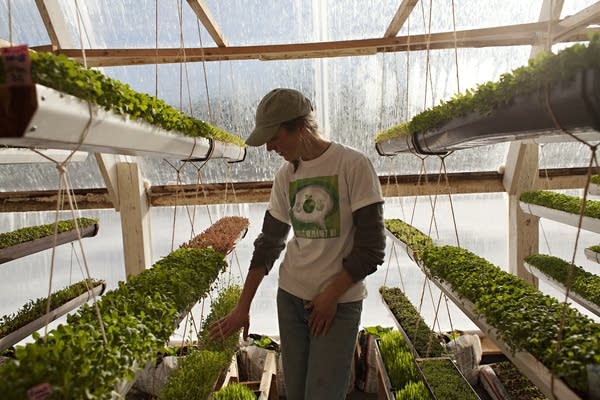'Deep winter' greenhouse grows veggies year-round

Sue Wika, 48, enjoys her time working in the deep-winter greenhouse at Paradox Farm, especially on the really cold days. Produce grown in the greenhouse is sufficient for the farm's owners, their animals and 10 or so other families.
Ann Arbor Miller/For MPR News
Go Deeper.
Create an account or log in to save stories.
Like this?
Thanks for liking this story! We have added it to a list of your favorite stories.


